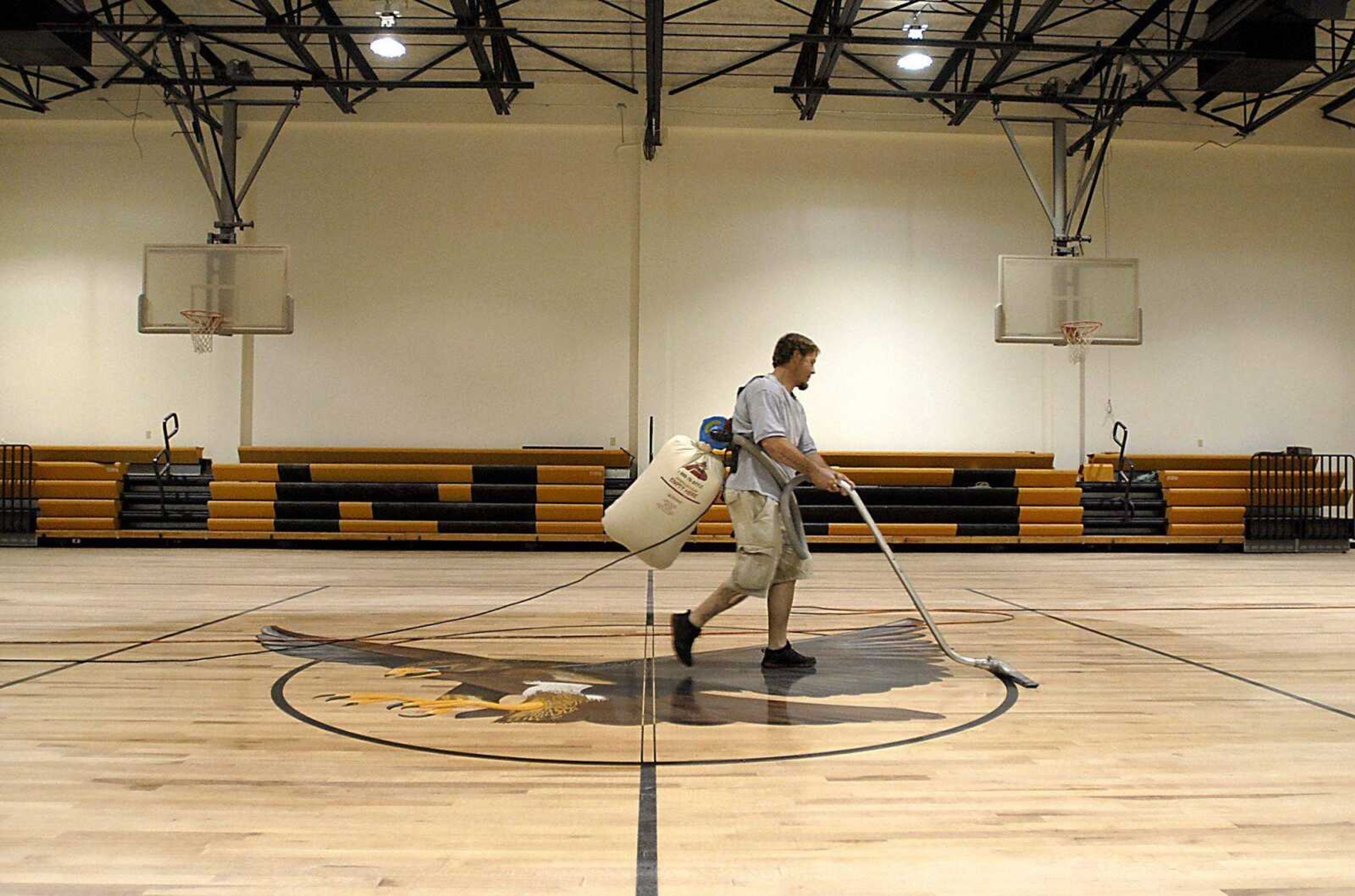Schools benefit as tax revenue increases and enrollment doesn't
As new houses or subdivisions pop up around Cape Girardeau County, schools are feeling the benefit: Generally, tax revenue is increasing but enrollment is not. The assessed value of property in the Jackson School District, for example, increased 38.2 percent over the last five years. New construction accounted for 43 percent of the increase...
As new houses or subdivisions pop up around Cape Girardeau County, schools are feeling the benefit: Generally, tax revenue is increasing but enrollment is not.
The assessed value of property in the Jackson School District, for example, increased 38.2 percent over the last five years. New construction accounted for 43 percent of the increase.
This year, the district netted $1.49 million in tax revenue from the new construction, or $319 per pupil.
Despite the new construction, enrollment has remained relatively stable. While there have been fluctuations, in 2003 the district served 4,623 students. In the current school year there are 4,675 students.
The extra revenue from new construction isn't set aside for any particular purpose, assistant superintendent Jim Welker said. The money flows into a general fund, where it is spent like any other money that is not limited in use. Jackson's budget has allowed for spending on facility and technological improvements, such as for mounted projectors in classrooms, Welker said.
"Even if our enrollment stays the same, we still have additional expenses," he said, pointing to increases in utility, insurance and bus fuel costs.
Construction can be an important source of new money for districts. When property already on the tax rolls such as homes and businesses rises in value faster than inflation, districts must reduce their tax rates. Three of the five school districts in Cape Girardeau County cut their tax rates in 2007.
In the little Nell Holcomb School District, which serves 325 students through the eighth grade, new construction over the last five years meant $82,941 in new revenue this year, or $255 per pupil.
"The new construction, oh it helps, immensely over time," said Darryl Pannier, the superintendent of Nell Holcomb.
Like Jackson, Nell Holcomb does not earmark revenue from taxes on new construction. Instead, it is placed in the incidental or teacher's fund and incorporated into the normal budgeting process. The money has helped fund construction and technology improvements, Pannier said.
"For us, any kind of money that we've had that's been above and beyond, we've been able to apply to pay off our junior high building," he said.
The money has also been used to fund renovations to the school gymnasium, which is expected to be complete next month.
New construction often brings burdens to school districts as additional students must be educated. Why enrollment in the county has not increased with the new construction is unclear.
Pannier suspects people moving to the area could be retirees or families with children not yet school-age.
Welker said, "I think there's not as many children coming out of each house as 10 or 20 years ago."
In the Cape Girardeau School District, assessed values increased 25 percent over the past five years, a slower pace than the 38 percent increase recorded for Jackson. And new construction wasn't as big a factor in the Cape Girardeau increase, accounting for 35 percent of the additional value compared to 43 percent in Jackson.
But because Cape Girardeau has about 700 students less than Jackson, the overall per pupil revenue increase was $336 compared to $319 in Jackson. Misty Clifton, Cape Girardeau's director of finance, was not available for comment Monday.
About 300 homes were built or started in the county in 2007, and there is a potential for faster growth this year. Last week, three businessment announced plans to join forces to form the biggest development company in the county, 360 Land Development LLC. They intend to build about 140 homes in 2008 throughout the county.
"We anticipate a little bit of growth," Pannier said.
The increases in home construction somewhat bucks national trends. Elsewhere in the country, the market has weakened as housing prices have dropped and construction has been curbed.
In Cape Girardeau County, new construction peaked in 2006. Many districts are uncertain how upcoming construction will affect them.
Jackson administrators take projected growth into account while budgeting, but try to be conservative with numbers, Welker said. With this upcoming school year not being a reassessment year, he only predicts a 2 to 4 percent increase in assessed value.
Certain Jackson schools have seen significant enrollment increases, but much of the growth is due to the rearranging of buildings. In 2006, a kindergarten annex was closed for use by the high school.
"It's hard to predict what type of enrollment that would bring," Welker said, referring to 360 Land Development's plans. "While those are planned, we have no way of knowing when they will be completed, when they will be occupied, or who will buy them," he said.
lbavolek@semissourian.com
335-6611, extension 123
Connect with the Southeast Missourian Newsroom:
For corrections to this story or other insights for the editor, click here. To submit a letter to the editor, click here. To learn about the Southeast Missourian’s AI Policy, click here.










